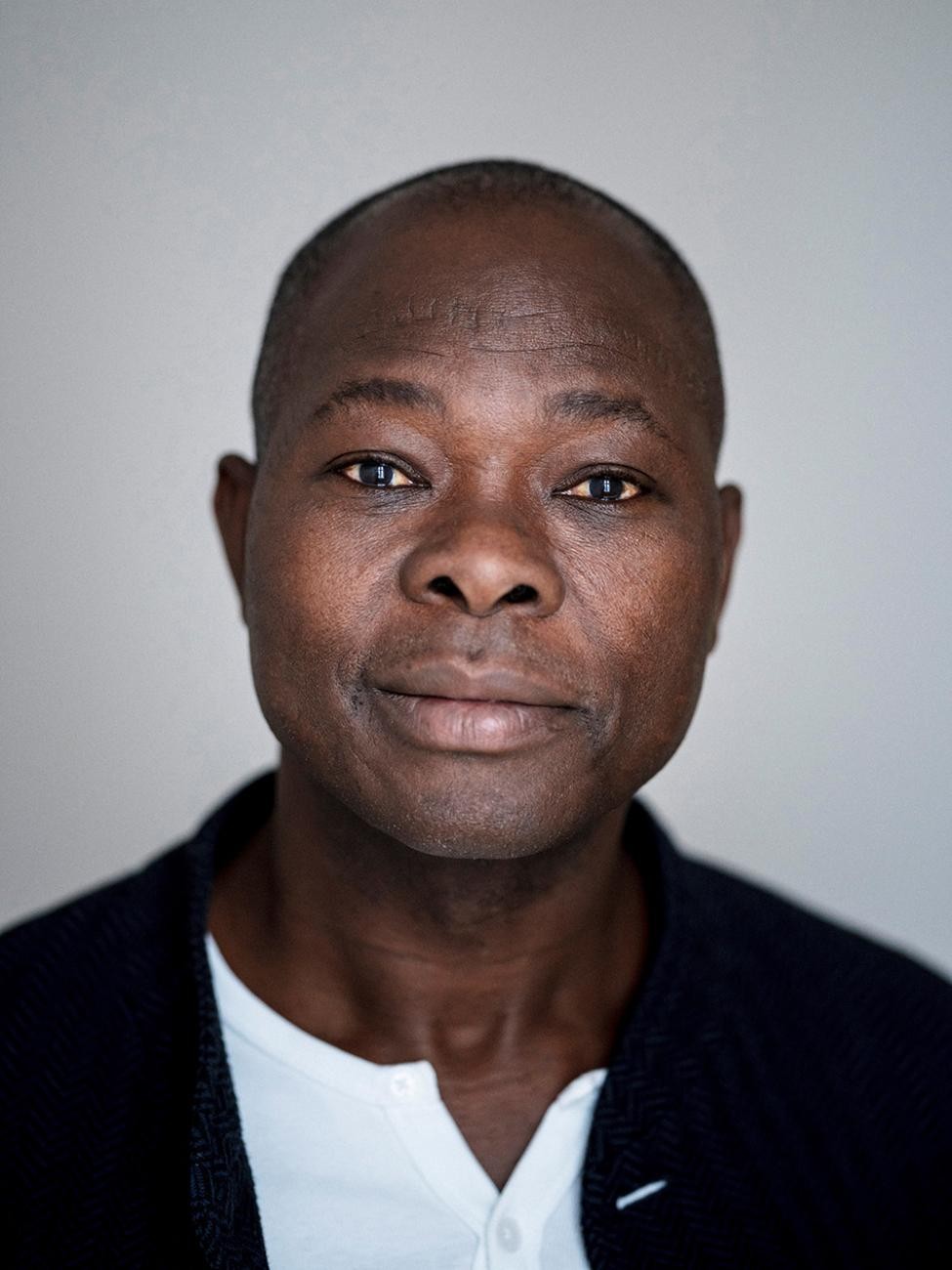Ο Francis Kéré παίρνει το βραβείο Αρχιτεκτονικής Pritzker
DS.WRITER:
Τάσος Γιαννακόπουλος
Κεντρική Εικόνα: Serpentine Pavilion | Photo courtesy of Iwan Baan
Ο Diébédo Francis Kéré γεννήθηκε το 1965 στην Burkina Faso και το 2022 παίρνει το Pritzker. Από το 1979 που ιδρύεται το ίδρυμα Pritzker, είναι η πρώτη φορά που λαμβάνει αυτή την τιμή μαύρος αρχιτέκτονας, και δη από την ήπειρο της Αφρικής. Επίσης, είναι η πρώτη φορά που ανεβαίνει έγχρωμη φωτογραφία του νικητή στην επίσημη ιστοσελίδα του ιδρύματος, με τις προηγούμενες να είναι όλες ασπρόμαυρες και να κυριαρχούν άντρες λευκοί, από την Ευρώπη, την Αμερική και την Ιαπωνία.

Diébédo Francis Kéré | photo courtesy of Lars Borges
Ο Francis Kéré, πέρα από πολύ ενδιαφέρουσα προσωπική ιστορία, έχει και ακόμη πιο ενδιαφέρουσα αρχιτεκτονική. Από την Burkina Faso, που είναι από τα πιο φτωχά κράτη στον κόσμο, με χαμηλούς δείκτες εκπαίδευσης παγκοσμίως και με ελλείψεις σε πόσιμο νερό, ηλεκτρισμό και υποδομές, ο Kéré κατορθώνει να είναι ο πρώτος στο χωριό του που πάει σχολείο, και το 1985 κάνει το μακρύ ταξίδι ως το Βερολίνο, με υποτροφία σε σχολή ξυλουργικής. Το πρωί φτιάχνει έπιπλα και οροφές και το βράδυ παρακολουθεί μαθήματα. Τελικά, λαμβάνει ακόμη μια υποτροφία στο Technische Universität Berlin και παίρνει το πτυχίο τού αρχιτέκτονα το 2004.
.jpg)
Benga Riverside School | photo courtesy of Francis Kéré
.jpg)
Benga Riverside School | photo courtesy of Francis Kéré
Ο ίδιος λέει: “Μεγάλωσα σε μια κοινότητα που δεν υπήρχε νηπιαγωγείο, αλλά η κοινότητα ήταν η οικογένειά σου. Όλοι σε φρόντιζαν και ολόκληρο το χωριό ήταν η παιδική σου χαρά. Οι μέρες μου ήταν γεμάτες με την εξασφάλιση φαγητού και νερού, αλλά και απλά να βρισκόμαστε μαζί, να μιλάμε μαζί, να χτίζουμε σπίτια μαζί. Θυμάμαι το δωμάτιο όπου η γιαγιά καθόταν και έλεγε ιστορίες με ένα μικρό φως, ενώ στριμωχνόμαστε όλοι παρέα, και η φωνή της μέσα στο δωμάτιο μας μάζευε, καλώντας μας να πλησιάσουμε περισσότερο και να δημιουργήσουμε ένα ασφαλές μέρος. Αυτή ήταν η πρώτη μου αίσθηση αρχιτεκτονικής.”
.jpg)
Léo Doctors’ Housing | photo courtesy of Francis Kéré
.jpg)
Gando Primary School | photo courtesy of Erik-Jan Owerkerk
.jpg)
Gando Primary School | photo courtesy of Erik-Jan Owerkerk
.jpg)
Gando Primary School | photo courtesy of Erik-Jan Owerkerk
.jpg)
Gando Primary School | photo courtesy of Erik-Jan Owerkerk
Το πρώτο έργο που κάνει το ολοκληρώνει το 2001, και είναι το σχολείο της γενέτειράς του Gando, το οποίο έκτοτε έχει λάβει πολλές επεκτάσεις. Στήνει μαζί με συναδέλφους και συμφοιτητές το Kéré Foundation, και βρίσκει χρηματοδότηση ώστε να προσφέρει πραγματικά, πίσω στους ανθρώπους που τον στήριξαν και τον μεγάλωσαν. Όχι μονάχα με πρακτικό, ανθρωπιστικό έργο, αλλά με ομορφιά που να είναι σε θέση να εμπνέει και να προκαλεί τους ανθρώπους να ονειρεύονται. Αποτέλεσμα αυτής της πρακτικής είναι το βραβείο Aga Khan, επειδή το έργο του δείχνει τη δύναμη του σχεδίου και της αρχιτεκτονικής σε κοινωνικό, τεχνολογικό, οικονομικό και πνευματικό επίπεδο.
.jpg)
Sarbalé Ke | photo courtesy of Iwan Baan
.jpg)
Sarbalé Ke | photo courtesy of Iwan Baan
.jpg)
National Park of Mali | photo courtesy of Francis Kéré
.jpg)
National Park of Mali | photo courtesy of Iwan Baan
Η αρχιτεκτονική του γλώσσα είναι βαθιά ριζωμένη στις πρακτικές ανάγκες του τόπου και των ανθρώπων τής εκάστοτε περιοχής, αλλά πηγαίνει μακρύτερα από τους οικονομικούς και κλιματικούς περιορισμούς που γεννάνε τα έργα που κάνει. Στοχεύει στην άνεση και την ομορφιά, που ο ίδιος πολύ λογικά θεωρεί πως δεν είναι -και δεν θα πρέπει να είναι- προνόμιο μονάχα των ευκατάστατων, αλλά όλων. Η γλώσσα των διπλών οροφών, της θερμικής μάζας, των πύργων αέρα, του έμμεσου φωτισμού, του διαμπερούς αερισμού και των σκιασμένων χώρων, είναι μια γλώσσα που χειραγωγείται τεχνηέντως καλύπτοντας τις προγραμματικές και βιοκλιματικές ανάγκες και προσφέροντας πλαστικά έργα με ιδιαίτερη υλική παρουσία και χωρική διάρθρωση.
.jpg)
Xylem | photo courtesy of Iwan Baan
.jpg)
Xylem | photo courtesy of Iwan Baan
.jpg)
Opera Village | photo courtesy of Francis Kéré
.jpg)
Centre for Health and Social Welfare | photo courtesy of Francis Kéré
.jpg)
Centre for Health and Social Welfare | photo courtesy of Francis Kéré
.jpg)
Centre for Health and Social Welfare | photo courtesy of Francis Kéré
Ο Francis Kéré γνωρίζει πως η αρχιτεκτονική δεν περιορίζεται στο τελικό αντικείμενο, και πως η ίδια η διαδικασία της αρχιτεκτονικής είναι πολλές φορές πιο σημαντική από το τελικό προϊόν. Τα έργα του είναι από τοπικά υλικά, με κατάλληλες απαντήσεις σε τοπικά κλίματα. Εντάσσει το τοπικό εργατικό δυναμικό στα έργα του, το οποίο και εκπαιδεύει, εμφανίζοντας τις οικονομικές προεκτάσεις της αρχιτεκτονικής. Ο Francis, με διπλή υπηκοότητα από Burkina Faso και Γερμανία και με γραφεία και προσωπική επένδυση και στις δύο χώρες, καταπιάνεται με την αρχιτεκτονική σε ακραία οικονομικά και κλιματικά περιβάλλοντα και καθιστά σαφές πως οι περιφέρειες έχουν εκείνο τον ιδιαίτερο χαρακτήρα, ώστε να λάβουν κεντρική θέση στις συζητήσεις περί βελτίωσης της ανθρώπινης ζωής. Με γνώση των ιστοριών και των παραδόσεων, δείχνει με λυρικότητα και ακρίβεια πώς τοπικές κοινότητες μπορούν να δημιουργήσουν για τον εαυτό τους, και ταυτόχρονα να προσφέρουν στον παγκόσμιο διάλογο ως ίσοι συνομιλητές στο τραπέζι του ανθρώπινου πολιτισμού και γνώσης.




.jpg)
_Dean_Kaufman.jpg)
.jpg)
 (1).jpg)
